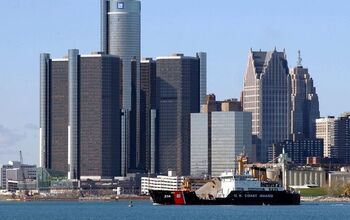Tata's Busy Week

Last week was an eventful one for Tata Motors. First, Daimler announced that it had completed selling off its 5.34% stake in the Indian automaker, for USD $422 million. Investors including Citibank and Tata Sons, the largest current Tata Motors stockholder, acquired the shares. Daimler explained the move by saying that it is now well enough established in India in terms of passenger and commercial vehicles, to no longer need an equity share in a local company. Daimler already builds CVs in Pune and its new CV plant in Chennai will go online in 2012. Daimler and Tata have a relationship that dates to 1954, when Tata started assembling Mercedes-Benz trucks. The two companies started local assembly of M-B cars in 1994 under the Telco joint venture.
Later, Tata Motors Group announced that global unit sales increased 59% in February 2010 over last February’s sales. TMG includes commercial vehicles made by Tata, Tata Daewoo and Hispano Carrocera, along with Tata, Jaguar and Land Rover passenger vehicles. Cumulative sales for the fiscal year were also up 17%. Commercial vehicles led the way with a 70% spurt. Total vehicles delivered were a hair shy of 90,000. All three passenger vehicle operations, Tata, Jaguar and Land Rover booked solid y-t-y increases over the bottomed out Feb. ’09 sales, 60%, 55%, and 62% respectively.
The Indian government, at a ceremony attended by Railway Minister Mamata Banerjee, inaugurated the opening of a number of rail hubs intended to serve the growing Indian auto industry. The first train to arrive at the automobile logistics center in Shalimar, Bengal was loaded with Tatas and Marutis, with Tata Nanos being the most numerous, followed by the Tata Ace micro CV. Ironically, most of those Nanos shipped to Bengal were originally going to be built there, but it was Mamata Banerjee, herself a Bengali politician, who organized displaced farmers to demonstrate against the almost completed Nano plant in Singur. Tata CEO Ratan Tata responded by moving the unit to Sanand in Gujarat state. That plant is not yet in production, so the Nanos arriving in Bengal were assembled at Tata’s Pantnagar factory in Uttarakhand.
Coming on the heels of all that good news, CRISIL, India’s leading credit rating agency, has raised Tata Motors’ short term debt rating to A+, primarily on the strength of cost reductions and new product introductions at Jaguar Land Rover. CRISIL stressed that JLR’s fortunes are critical to Tata Motors’ financial standing.
All good news must come to an end, though. Increases in commodity prices as the global economy starts to recover, along with more expensive tires and taxes, will mean that the world’s cheapest car, the Nano, will not be able to hold the 100,000 rupee mark much longer. In the past year, steel has gone up 25%, and increased demand for other metals like copper and aluminum as well as petroleum based plastics has driven costs up on virtually everything that goes into making a car. So far 26,000 Nanos have been delivered, and Tata says that it will guarantee the original $2,200 price for the first 100,000 customers.
How many buyers will opt for the stripper Nano is unclear, since right now the almost twice as expensive (172,360 – 185,375 rupees) Nano LX is selling better than the base Nano. When Tata starts taking more orders in Q4 2010, expect to see the LX go up to 200,000 rupees (USD $4,400) and the base car to be priced @ 130,000 Rs.

Ronnie Schreiber edits Cars In Depth, the original 3D car site.
More by Ronnie Schreiber
Latest Car Reviews
Read moreLatest Product Reviews
Read moreRecent Comments
- ToolGuy First picture: I realize that opinions vary on the height of modern trucks, but that entry door on the building is 80 inches tall and hits just below the headlights. Does anyone really believe this is reasonable?Second picture: I do not believe that is a good parking spot to be able to access the bed storage. More specifically, how do you plan to unload topsoil with the truck parked like that? Maybe you kids are taller than me.
- ToolGuy The other day I attempted to check the engine oil in one of my old embarrassing vehicles and I guess the red shop towel I used wasn't genuine Snap-on (lots of counterfeits floating around) plus my driveway isn't completely level and long story short, the engine seized 3 minutes later.No more used cars for me, and nothing but dealer service from here on in (the journalists were right).
- Doughboy Wow, Merc knocks it out of the park with their naming convention… again. /s
- Doughboy I’ve seen car bras before, but never car beards. ZZ Top would be proud.
- Bkojote Allright, actual person who knows trucks here, the article gets it a bit wrong.First off, the Maverick is not at all comparable to a Tacoma just because they're both Hybrids. Or lemme be blunt, the butch-est non-hybrid Maverick Tremor is suitable for 2/10 difficulty trails, a Trailhunter is for about 5/10 or maybe 6/10, just about the upper end of any stock vehicle you're buying from the factory. Aside from a Sasquatch Bronco or Rubicon Jeep Wrangler you're looking at something you're towing back if you want more capability (or perhaps something you /wish/ you were towing back.)Now, where the real world difference should play out is on the trail, where a lot of low speed crawling usually saps efficiency, especially when loaded to the gills. Real world MPG from a 4Runner is about 12-13mpg, So if this loaded-with-overlander-catalog Trailhunter is still pulling in the 20's - or even 18-19, that's a massive improvement.


































Comments
Join the conversation
The rail hub is really needed. Trucking is expensive in India, and the car-delivery trucks are enormous -- about the size of a US semi -- and I really don't know how they manage to make it down the road.